Carnegiella myersi, commonly known as the Pygmy Hatchetfish, is a tiny yet fascinating freshwater fish native to the Amazon River basin in South America. This diminutive species belongs to the family Gasteropelecidae, which includes other small hatchetfish species known for their unique shape and ability to “fly” above the water surface to escape predators.
Table of Contents
One of the most interesting aspects of the Pygmy Hatchetfish is its size – or lack thereof. Maxing out at just 0.8 inches (2 cm) in length, this fish is one of the smallest hatchetfish species in the world. Despite its tiny stature, C. myersi packs a lot of personality into its little body. These fish are active, peaceful, and make a striking addition to nano aquariums or community tanks with other small, non-aggressive species.
In the wild, Pygmy Hatchetfish inhabit small tributaries and flooded forests where they swim in large schools near the water surface, feeding on small insects, crustaceans, and zooplankton. As a result, they are considered top-dwelling fish and do best in aquariums with plenty of open swimming space and a tight-fitting lid to prevent their jumping habits.
While not as well-studied as some other aquarium fish species, the Pygmy Hatchetfish has been the subject of some interesting research. A 2015 study published in the journal Zoologischer Anzeiger found that C. myersi exhibits sexual dimorphism, with males being slightly smaller and more slender than females. This information can be useful for aquarists looking to breed this species in captivity.
In the aquarium trade, Pygmy Hatchetfish are sometimes sold under the name “Dwarf Hatchetfish” or “Pygmy Silver Hatchetfish.” They are relatively easy to care for but do have some specific requirements due to their small size and active nature. A well-maintained aquarium with good filtration, regular water changes, and a varied diet of small live or frozen foods is essential for keeping these fish healthy and thriving.
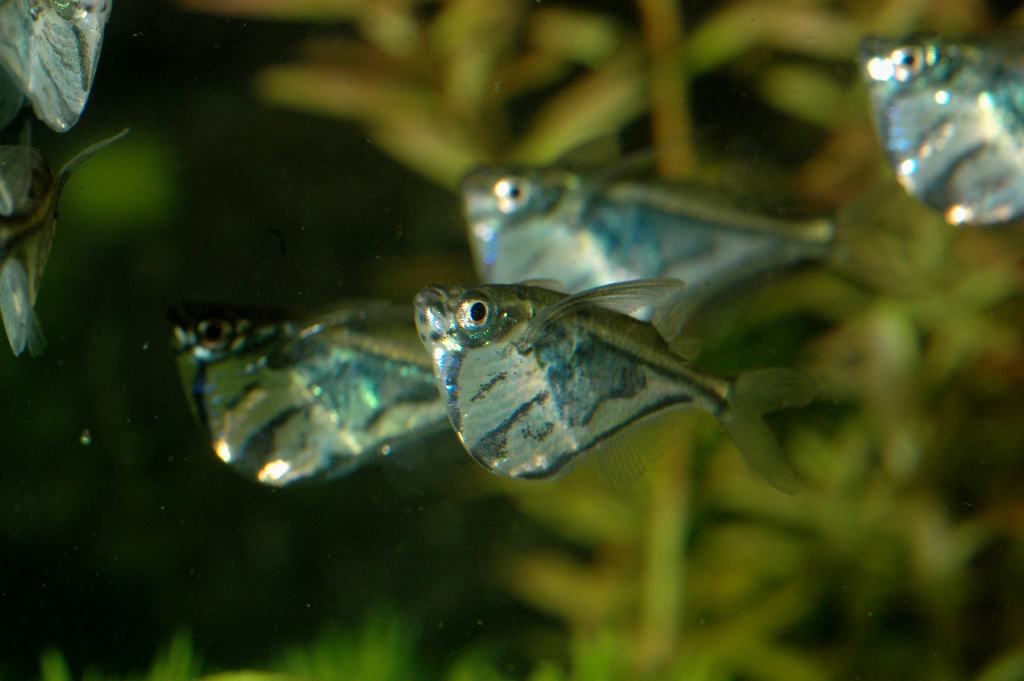
Key Information
The Pygmy Hatchetfish (Carnegiella myersi) is a tiny, eye-catching fish with a unique appearance. Its slender, laterally compressed body is accented by a striking silver coloration that reflects light, creating a brilliant shimmering effect. The fish’s translucent fins and tail add to its delicate, almost ethereal appearance, making it a captivating addition to any nano aquarium.
| Family | Gasteropelecidae |
| Origin | Amazon River basin in South America |
| Price | $5 to $10 per fish |
| Common Names | Pygmy Hatchetfish, Dwarf Hatchetfish, Pygmy Silver Hatchetfish |
| Variants | None known |
| Ideal Tank Size | 10 gallons or larger |
| Water Parameters | Temperature: 72-82°F (22-28°C), pH: 6.0-7.5, Hardness: 2-10 dGH |
| Lifespan | 3-5 years |
| Full Size | 0.8 inches (2 cm) |
| Natural Environment | Small tributaries and flooded forests |
| Behavior | Peaceful, active, schooling fish |
| Habitat Preference | Top-dwelling, prefers open swimming space |
| Aquarium Decoration | Densely planted with floating plants, open swimming areas |
| Ideal Tank Mates | Other small, peaceful fish (e.g., Neon Tetras, Rasboras, small Corydoras) |
| Fish to Avoid | Large, aggressive fish that may prey on them |
| Best Foods/Diet | Small live or frozen foods (e.g., daphnia, cyclops, baby brine shrimp) |
| Disease | Susceptible to common aquarium diseases if water quality is poor |
| Sex-Switch | Does not change sex |
| Gender Differences | Males are slightly smaller and more slender than females |
| Care Level | Moderate |
| Breeding Level | Moderate to Difficult |
Ideal Tank Mates
It is crucial to carefully select companions for the Pygmy Hatchetfish (Carnegiella myersi), ensuring they are peaceful, similar in size, and share compatible water parameters. Tank mates must not compete with the Pygmy Hatchetfish for food or space, and they should not pose a threat to these small hatchetfish.
Here are 15 ideal tank mates for the Pygmy Hatchetfish, each with unique characteristics that make them compatible with this tiny Amazonian species:
Neon Tetras (Paracheirodon innesi)
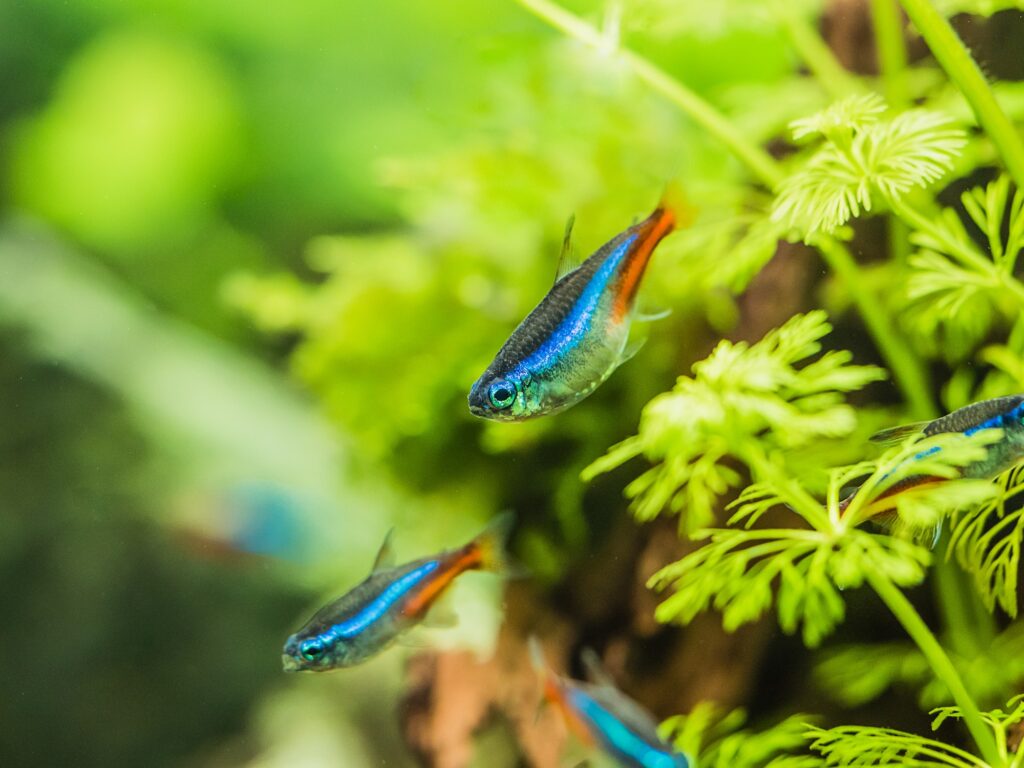
Neon Tetras are a classic choice for community tanks and make excellent companions for Pygmy Hatchetfish. These small, colorful fish share similar water requirements and are peaceful, active swimmers that will not outcompete or harass the hatchetfish.
Ember Tetras (Hyphessobrycon amandae)
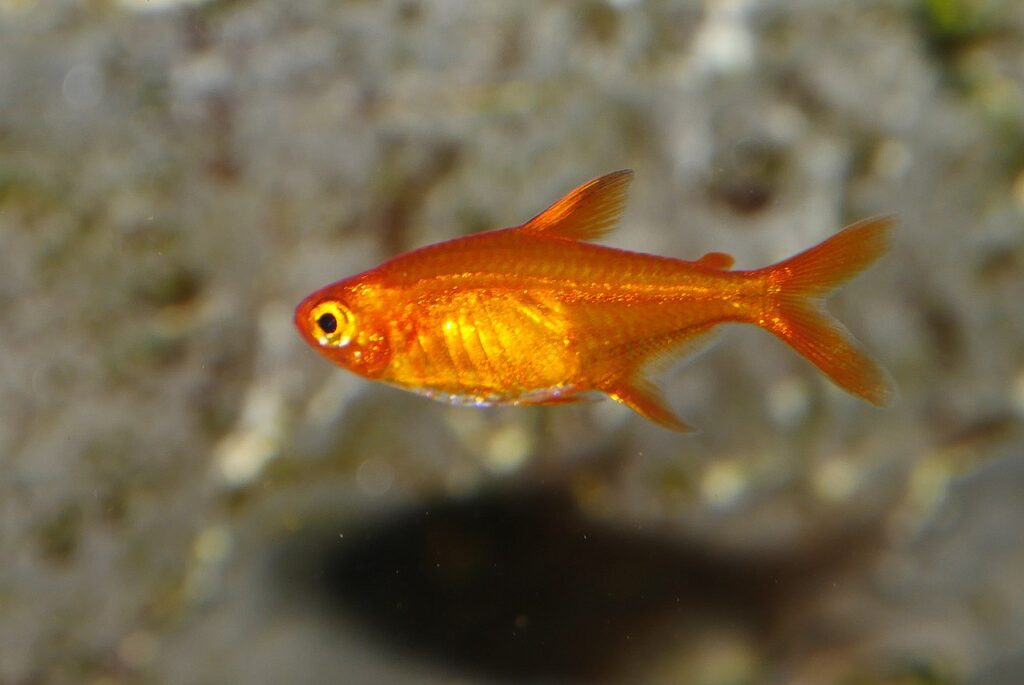
Ember Tetras are another small, peaceful species that can coexist harmoniously with Pygmy Hatchetfish. Their warm, reddish-orange coloration provides a stunning contrast to the silver hatchetfish, creating a visually appealing aquarium display.
Green Neon Tetras (Paracheirodon simulans)
Green Neon Tetras are close relatives of the regular Neon Tetra but with a more subdued, greenish coloration. They are equally peaceful and well-suited to life alongside Pygmy Hatchetfish in a planted community tank.
Chili Rasboras (Boraras brigittae)
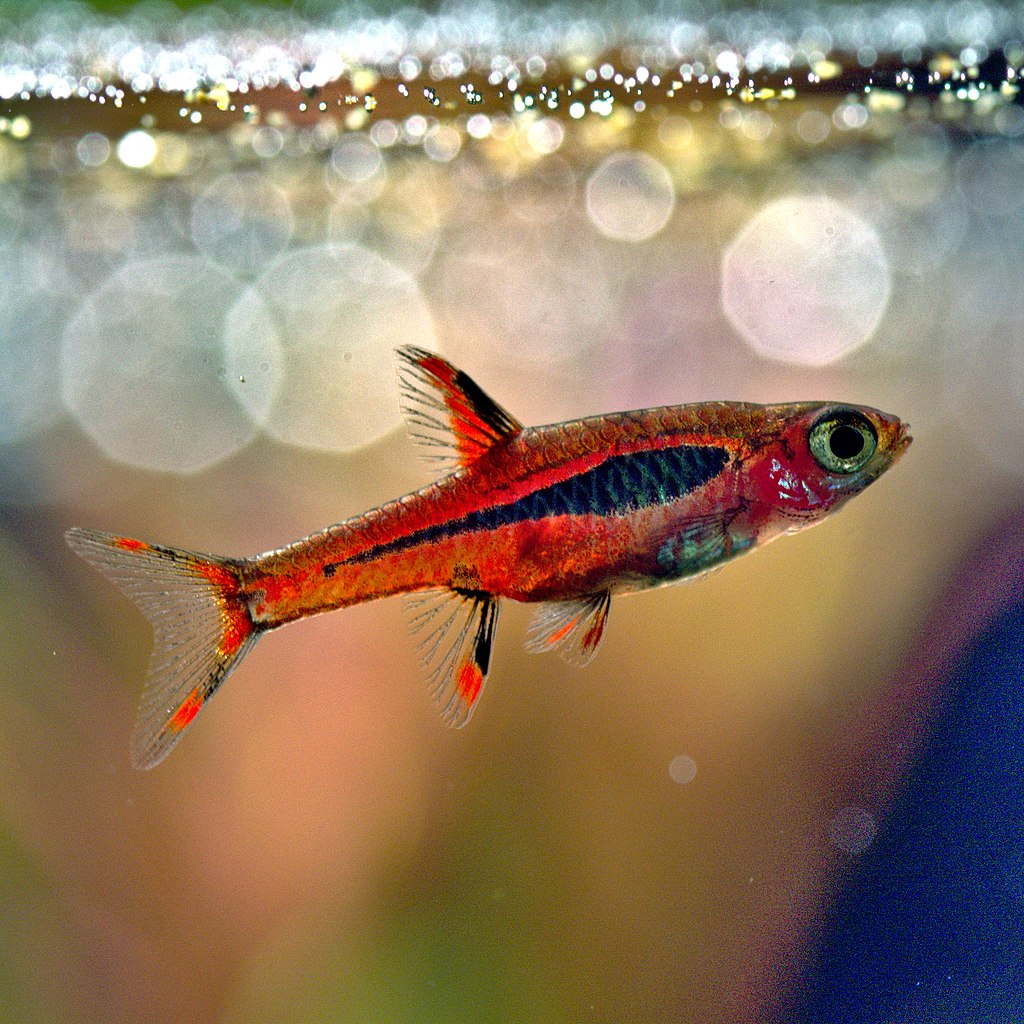
Chili Rasboras are tiny, vibrant fish that thrive in the same water conditions as Pygmy Hatchetfish. These active, schooling fish add a burst of color to the aquarium and will not compete with the hatchetfish for resources.
Celestial Pearl Danios (Danio margaritatus)
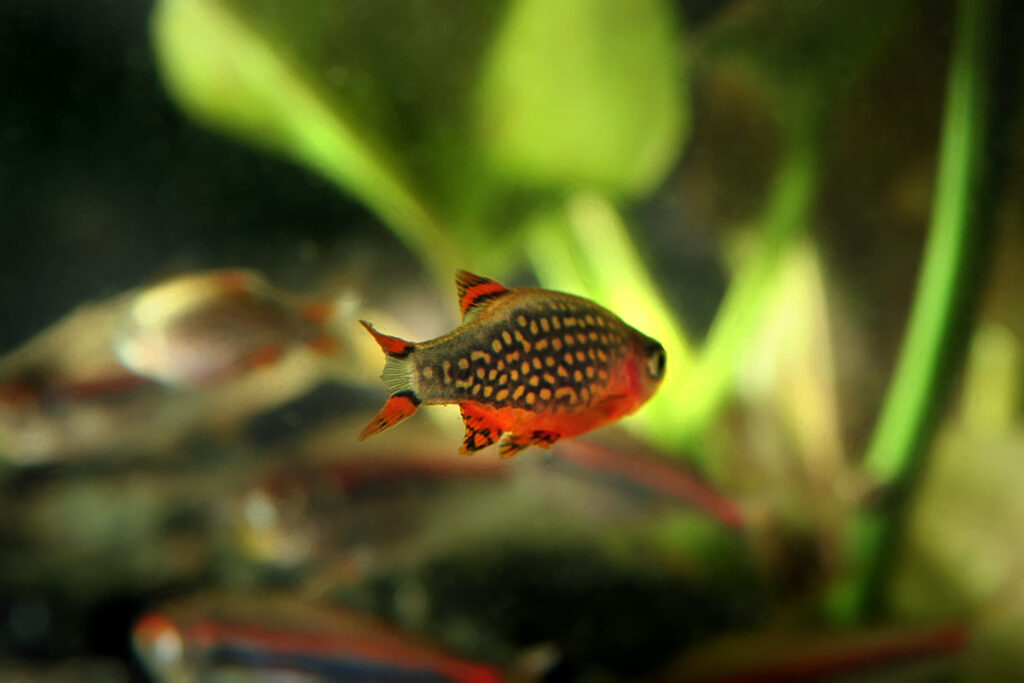
Celestial Pearl Danios, also known as Galaxy Rasboras, are small, peaceful fish with a unique, spotted appearance. They inhabit the middle to upper levels of the aquarium, making them an ideal companion for the top-dwelling Pygmy Hatchetfish.
Endler’s Livebearers (Poecilia wingei)
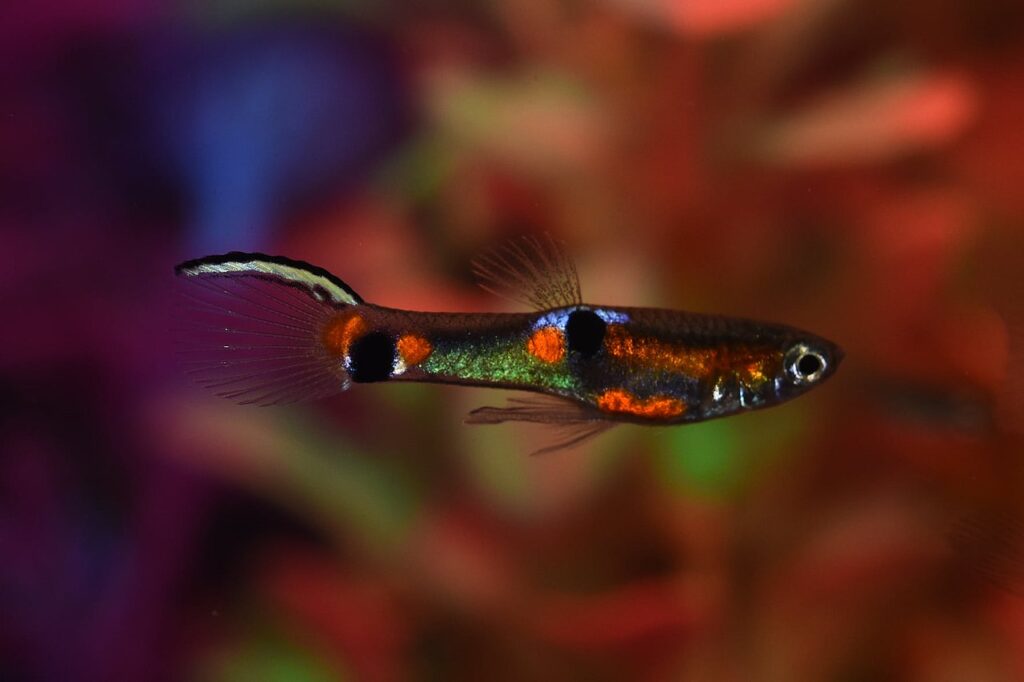
Endler’s Livebearers are small, colorful fish that adapt well to various water conditions. These peaceful fish are active swimmers and will not disturb the Pygmy Hatchetfish, making them a compatible tank mate choice.
Pygmy Corydoras (Corydoras pygmaeus)
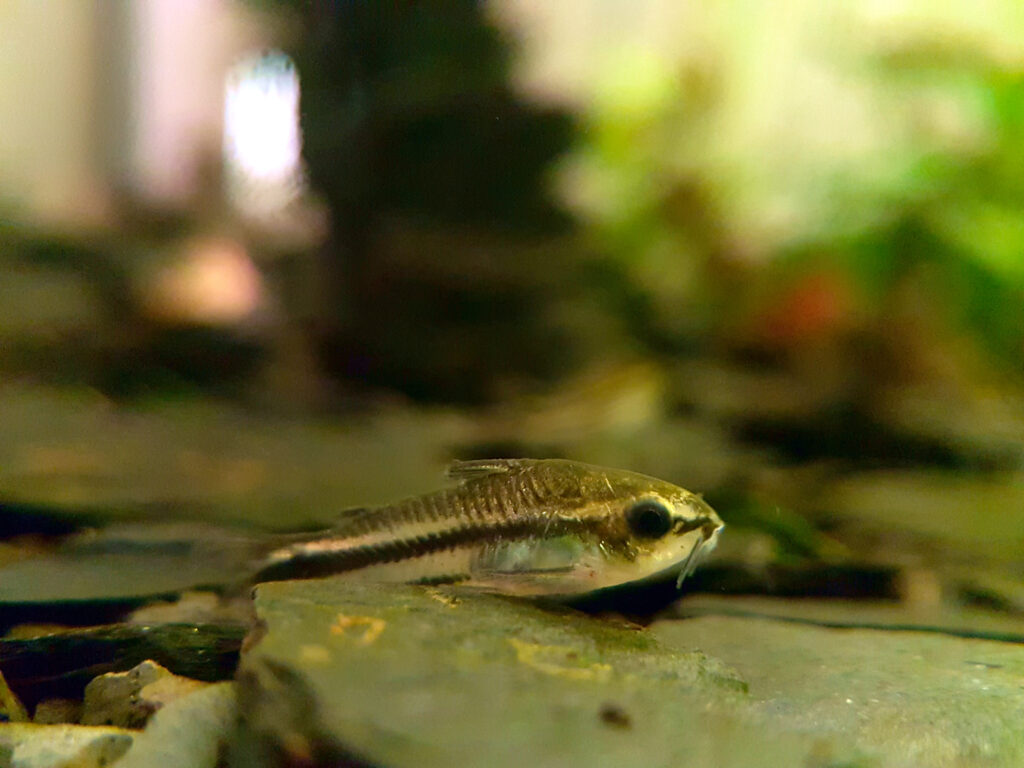
Pygmy Corydoras are a tiny species of bottom-dwelling catfish that can coexist peacefully with Pygmy Hatchetfish. These diminutive catfish help keep the substrate clean and add interest to the lower levels of the aquarium.
Dwarf Pencilfish (Nannostomus marginatus)
Dwarf Pencilfish are slender, peaceful fish that inhabit the middle to upper levels of the aquarium. Their unique, elongated shape and tranquil nature make them an excellent companion for Pygmy Hatchetfish.
Lambchop Rasbora (Trigonostigma espei)
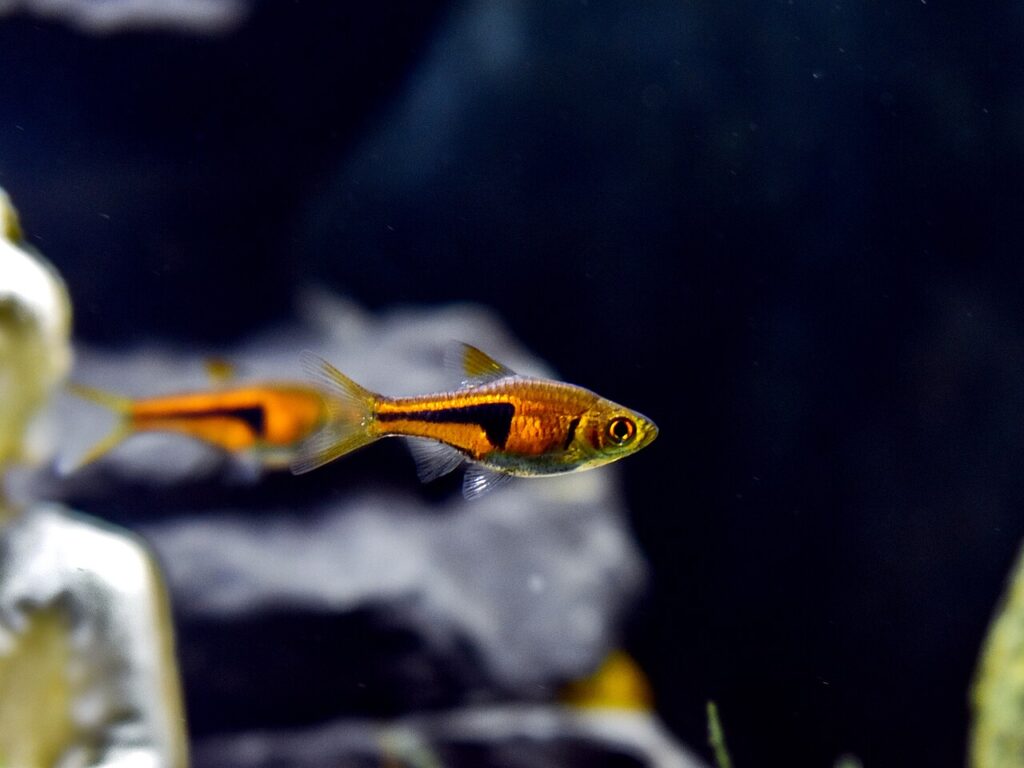
Lambchop Rasboras are small, attractive fish with a unique, triangular shape and copper-colored stripes. They are peaceful, schooling fish that will not outcompete or disturb the Pygmy Hatchetfish.
Dwarf Rasbora (Boraras maculatus)
Dwarf Rasboras, also known as Spotted Rasboras, are tiny, peaceful fish that thrive in heavily planted aquariums. Their small size and undemanding nature make them an ideal tank mate for Pygmy Hatchetfish.
Pygmy Gourami (Trichopsis pumila)
Pygmy Gouramis are small, peaceful labyrinth fish that can coexist well with Pygmy Hatchetfish. These curious fish are slow swimmers and will not outcompete the hatchetfish for food or space.
Sparkling Gourami (Trichopsis pumila)
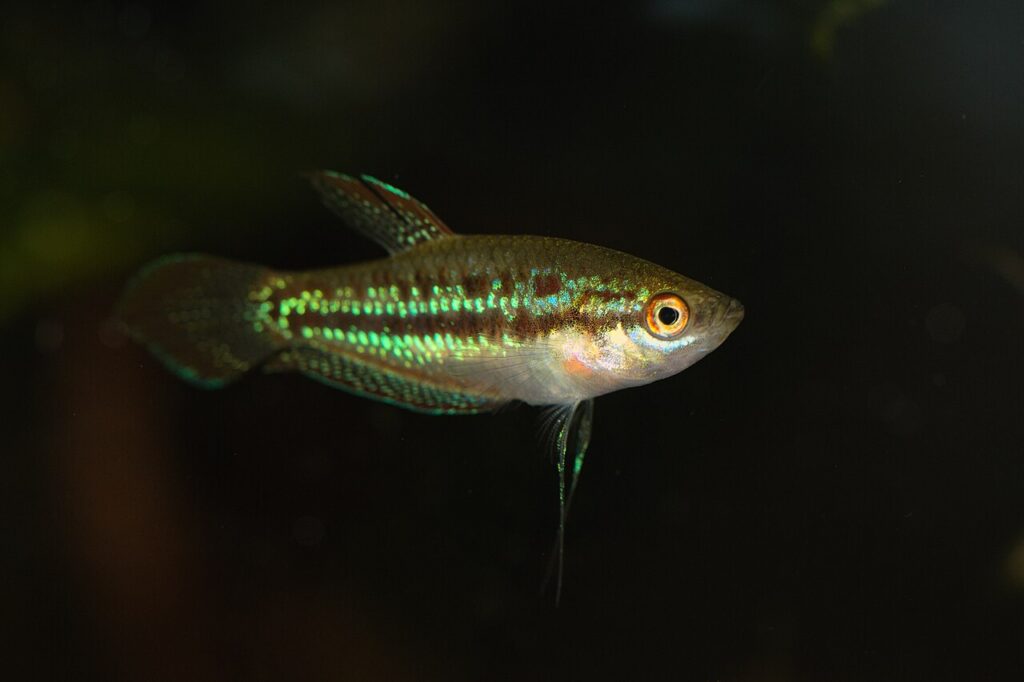
Sparkling Gouramis are another small, peaceful labyrinth fish that make excellent tank mates for Pygmy Hatchetfish. Their iridescent scales and gentle demeanor add a touch of beauty and tranquility to the aquarium.
Clown Killifish (Epiplatys annulatus)
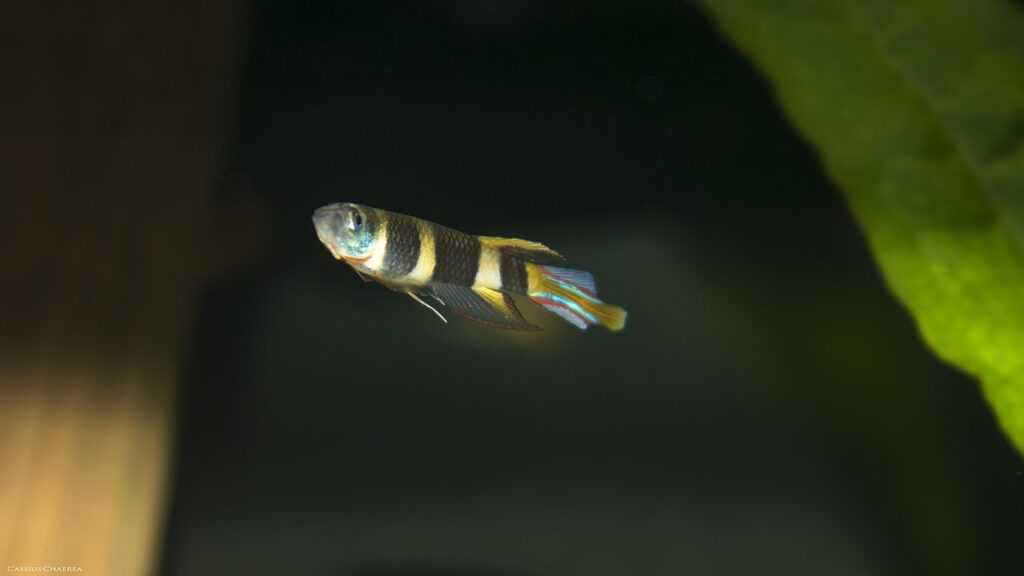
Clown Killifish are small, colorful fish that inhabit the upper levels of the aquarium. Their peaceful nature and similar water requirements make them compatible with Pygmy Hatchetfish.
White Cloud Mountain Minnow (Tanichthys micagemmae)
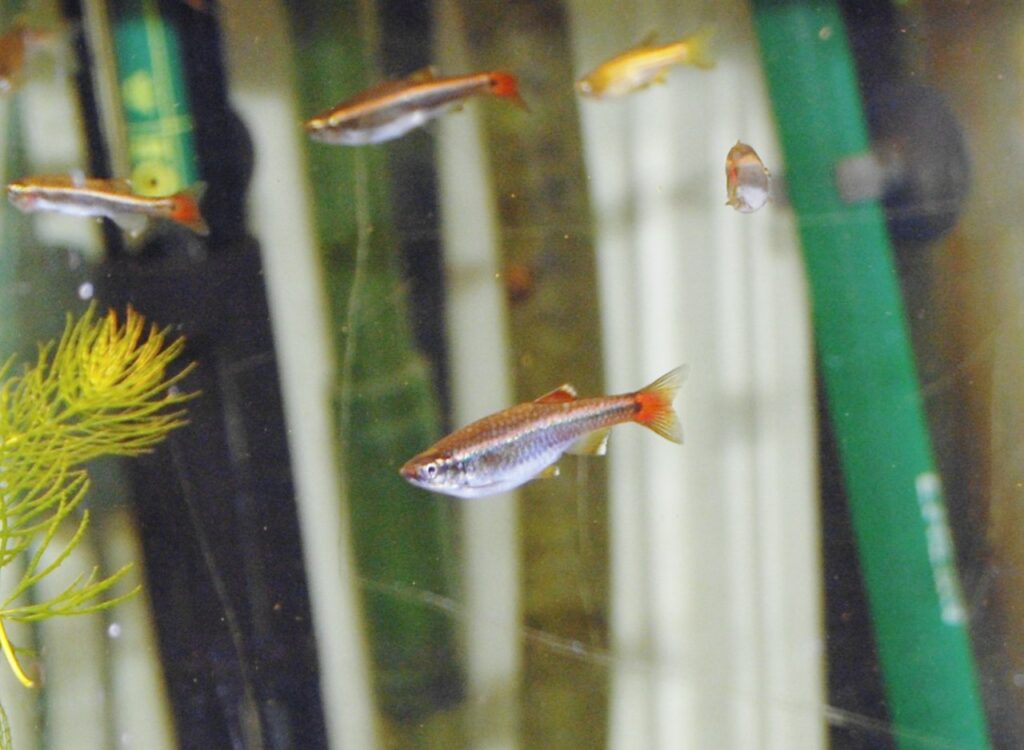
Vietnamese White Cloud Mountain Minnows are small, hardy fish that thrive in cool water conditions. Their peaceful temperament and adaptability make them suitable tank mates for Pygmy Hatchetfish.
Otocinclus Catfish (Otocinclus spp.)
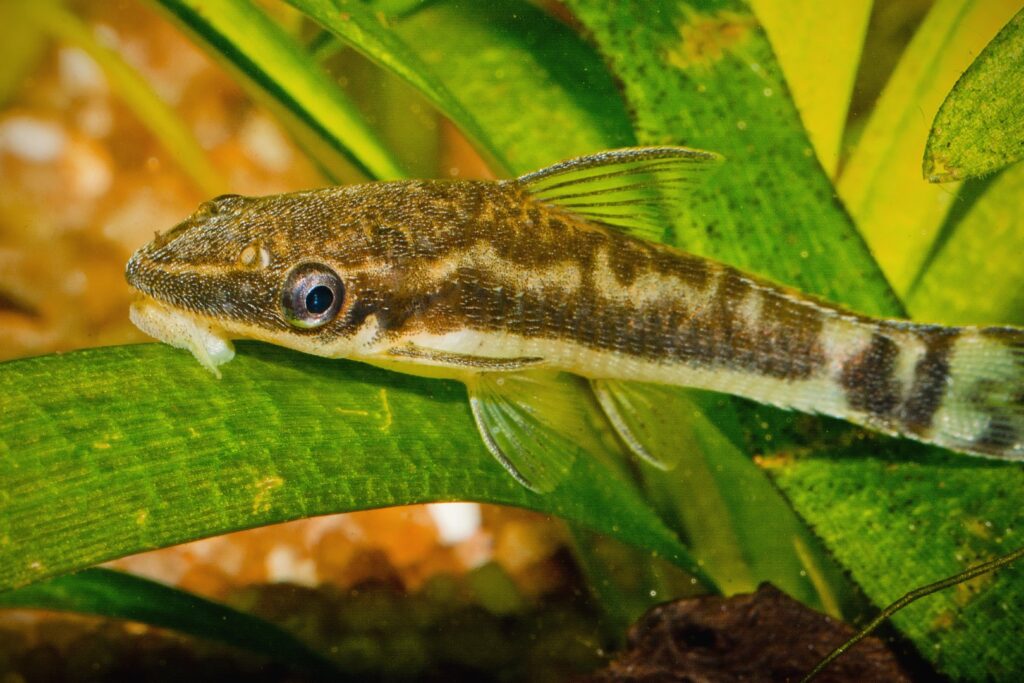
Otocinclus Catfish, often called “Otos,” are small, peaceful algae-eaters that make fantastic tank mates for Pygmy Hatchetfish. These industrious little catfish spend most of their time grazing on algae and biofilm, helping to keep the aquarium clean and well-maintained.
FAQs
How many Pygmy Hatchetfish should I keep in my aquarium?
It is recommended to keep Pygmy Hatchetfish in schools of at least 6-8 individuals. These fish are naturally social and feel more secure when kept in groups of their own kind. Keeping a larger school will also create a more impressive display in your aquarium.
Are Pygmy Hatchetfish jumpers?
Yes, Pygmy Hatchetfish are known for their jumping abilities. In the wild, they use this behavior to escape predators. In the aquarium, it is crucial to keep a tight-fitting lid on the tank to prevent these tiny fish from jumping out and injuring themselves.
Can Pygmy Hatchetfish live in a planted aquarium?
Absolutely! Pygmy Hatchetfish thrive in well-planted aquariums with plenty of open swimming space near the surface. Live plants not only provide shelter and hiding spots for these tiny fish but also help maintain good water quality by absorbing excess nutrients.
How often should I feed my Pygmy Hatchetfish?
Pygmy Hatchetfish have small stomachs and high metabolisms, so it is best to feed them small amounts of food multiple times a day. Offering food 2-3 times daily is ideal, ensuring that you provide only what they can consume within a few minutes to avoid overfeeding and water quality issues.
Are Pygmy Hatchetfish sensitive to water changes?
Like most fish, Pygmy Hatchetfish can be sensitive to sudden changes in water parameters. It is essential to perform regular water changes (about 10-15% weekly) to maintain good water quality, but be sure to use a water conditioner and avoid drastic temperature changes when replacing the water.
Can Pygmy Hatchetfish be kept with shrimp or snails?
Yes, Pygmy Hatchetfish can coexist peacefully with small, non-aggressive invertebrates like dwarf shrimp (e.g., Cherry Shrimp, Amano Shrimp) and small snails (e.g., Nerite Snails, Malaysian Trumpet Snails). These invertebrates can help keep the aquarium clean and will not harm the hatchetfish.
Are Pygmy Hatchetfish difficult to breed in captivity?
Breeding Pygmy Hatchetfish in captivity can be challenging, as they have specific requirements for spawning. These fish are egg scatterers and need fine-leaved plants or spawning mops for egg deposition. The eggs and fry are also sensitive to water quality and require specialized care. Breeding these fish is generally considered a task for experienced aquarists.
How can I tell if my Pygmy Hatchetfish are healthy?
Healthy Pygmy Hatchetfish should have a plump, rounded body shape, clear eyes, and no visible signs of disease or injury. They should be active swimmers, readily accept food, and display normal schooling behavior. If you notice any lethargy, loss of appetite, or physical abnormalities, it may indicate an underlying health issue that requires attention.